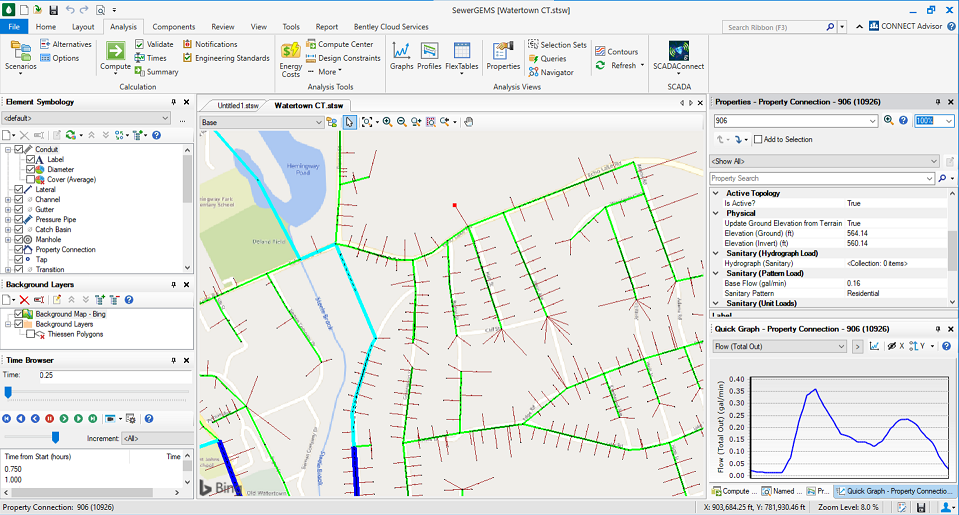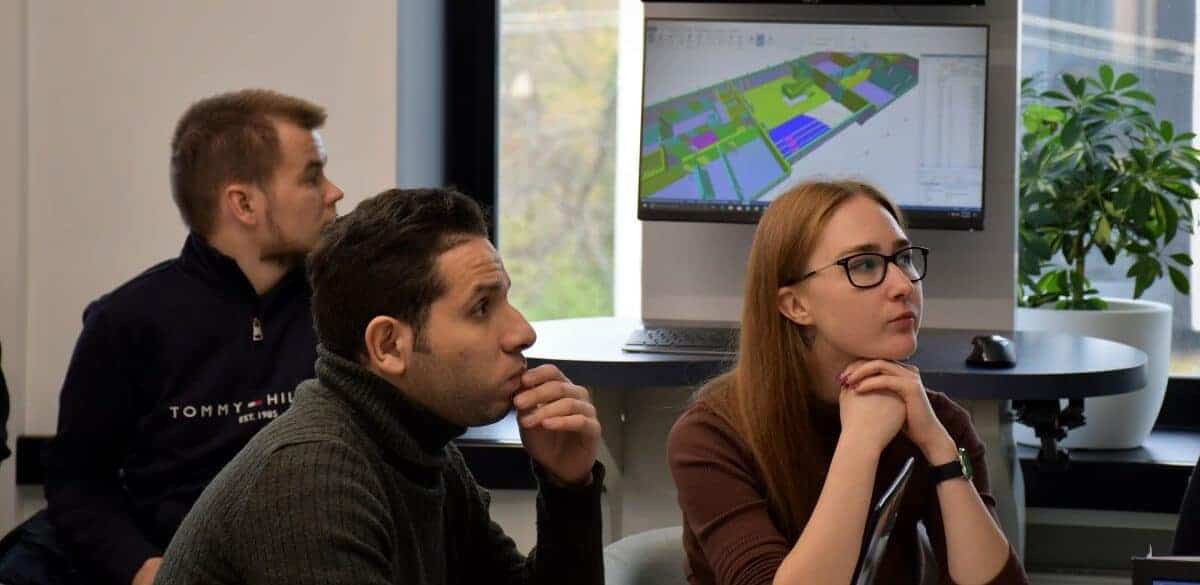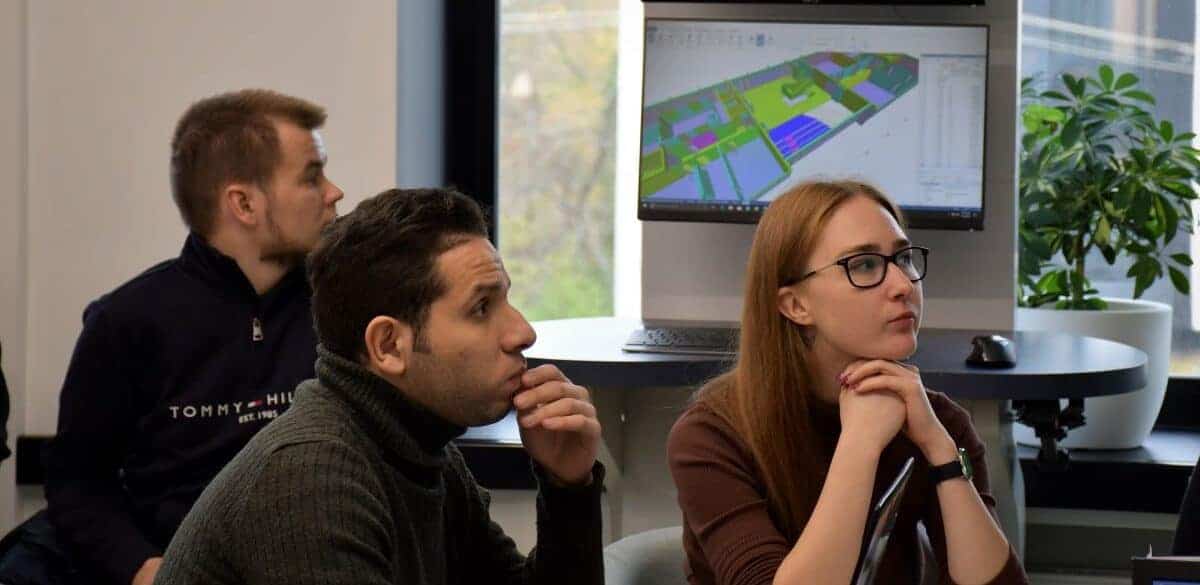As a hydraulic modeler, you know the science behind conveying liquids through pipes and channels, and how it boils down to either pressure flow or open channel flow.

Water systems deal mainly with pressure flow because they rely on pressure – generated by a pump or the power of gravity, to get water to users. Sewer systems deal with pressure and open channel flow, as they are designed to convey wastewater via gravity as much as is topographically possible.
Clean or not-so-clean water, the hydraulic principles remain the same and, not surprisingly, so do the modeling tools, as is the case with OpenFlows WaterGEMS and SewerGEMS.
If you are a WaterGEMS user and ever wondered about its sibling product, SewerGEMS, read on to find out how similar these two products are!
1. Similar Interface and Input
SewerGEMS shares the same intuitive user interface as WaterGEMS, so don’t be surprised to see the same icons that you already know. For example, Element Symbology, Backgrounds, FlexTables, Properties, Prototypes, Contours, Graphing, Profiles, Selection Sets, etc.
Elements are laid out in the exact same way and their properties can be imported using ModelBuilder or manually entered. Be ready to enter roughness and diameter for pipes.
For gravity elements, elevation matters most as you rely on the slope to move flows, so you will find the familiar TRex for elevation extraction and an even more sophisticated tool called Terrain Models that can dynamically read a node’s elevation from a digital terrain model, based on the node’s coordinates.
2. Multi-Platform (ArcGIS, Stand-alone, AutoCAD, MicroStation)
WaterGEMS and SewerGEMS are available as stand-alone platforms or on ArcGIS, MicroStation, AutoCAD, or Civil3D.
Additionally, SewerGEMS can be used directly inside of OpenRoads Designer and OpenSite Designer. This brings seamless interoperability between these platforms, enabling you to work in whatever platform you prefer.
3. Demands vs Sanitary Loads
In a water model, demands dictate the amount of flow circulating in the system and the software calculates resulting head losses and pressures accordingly.
In a sewer model, sanitary loads (and optionally inflows and infiltration) dictate flows. You can enter sanitary loads using the familiar LoadBuilder tool, or estimate loads as a percentage of water consumption.
4. Identical Reporting Tools and Operational Components
Like water models, sewer models can be run in Steady-State or Extended Period Simulations (EPS), so expect to find known components such as Pump Definitions, Patterns, Controls, Graphing, Time Browser, etc.
5. Identical Scenario Management
As it has become standard modeling practice, engineers rely on the ability to compare different scenarios to make important design and operational decisions.
Luckily for WaterGEMS users, Scenarios, Alternatives, and Calculation Options work the same in both products.
What is Left to Learn?
SewerGEMS includes four solvers – GVF Rational, GVF SewerCAD, Implicit, and SWMM, which give you the ability to do hydrological modeling (take rain data and convert it to runoff flow) for analysis of stormwater and combined systems. Head over to our YouTube channel to learn these additional skills whenever you need them.
If you are ready to make a purchase or have a question about SewerGEMS, feel free to reach out to Bentley’s eStore team at [email protected].

